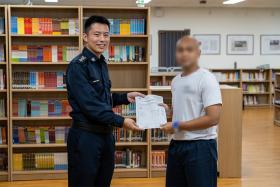More Primary 6 pupils applied for Direct School Admission this year
New PSLE scoring system among the factors for an increase of 900 applications
More Primary 6 pupils applied to secondary schools via Direct School Admission (DSA) this year, amid uncertainty among pupils and parents on how the new Primary School Leaving Examination (PSLE) scoring system would affect pupils' chances of getting into a school of their choice.
Some 12,100 pupils opted for the DSA route to secure their school of choice based on their talents in sports, co-curricular activities or specific academic areas. Last year, 11,900 applied and 3,600 were accepted.
Pupils can apply to more than one school, and the DSA exercise that closed on June 1 received 31,400 applications, up from 30,500 last year.
Notably, mainstream secondary schools and Integrated Programme (IP) schools' O-level track together received more DSA applications than in the previous year. These non-IP applications hit 59 per cent this year, compared with 56 per cent last year, said a Ministry of Education (MOE) spokesman.
Ms Christina Loh, 45, was among the parents concerned that the PSLE's Achievement Level (AL) scoring system that kicked in this year, replacing the T-score, would make it difficult for children to get into top schools.
"The new system makes it less marks-dependent since there may be balloting involved as a tiebreaker. So having DSA would increase her chances of getting into the school she wants," said the superintendent of an adult disability home.
Her daughter Kayla Hoo, 12, applied to three secondary schools via DSA and received confirmed offers from two in the areas of bilingualism and social innovation.
Raffles Institution, which typically has about 30 per cent of its Secondary 1 places taken up by DSA applicants, received an "overwhelming" number of applications this year, said its principal Frederick Yeo.
There were about 13 applicants for each spot this year, compared with eight vying for each place before MOE's centralised system was set up in 2019, said Mr Yeo.
The increase could be due to a combination of factors, including MOE's centralised portal, which makes applying more convenient, and mainstream secondary schools increasingly making a name for themselves in niche areas, he said.
More primary schools and parents could have made pupils aware of DSA, and the DSA route would give more assurance to those who feel uncertain about the AL scoring system.
DSA allows pupils to apply to a secondary school using achievements and talents in academic areas such as science and mathematics or language and humanities, and non-academic fields such as visual and performing arts, sports and games, or uniformed groups and leadership.
Pupils offered a place in a school will need to achieve a PSLE score that qualifies them for the course offered by the school. Primary 6 pupils who were selected had received offers by Sept 13, and they have up to Oct 29 to make their choices. The allocation results will be released along with the PSLE results late next month.
Pupils who are unsuccessful will have to take part in the Secondary 1 posting process.
Get The New Paper on your phone with the free TNP app. Download from the Apple App Store or Google Play Store now


